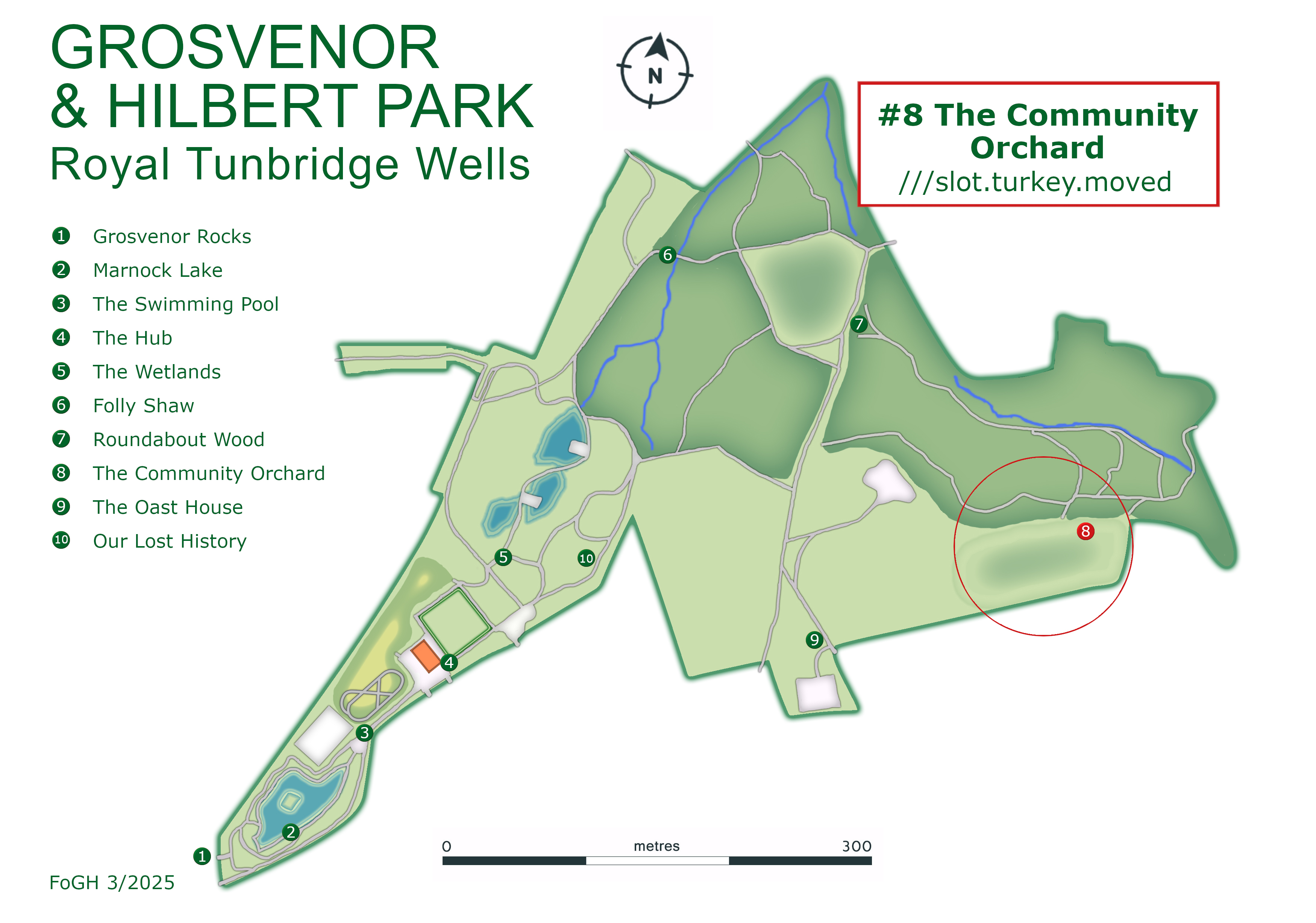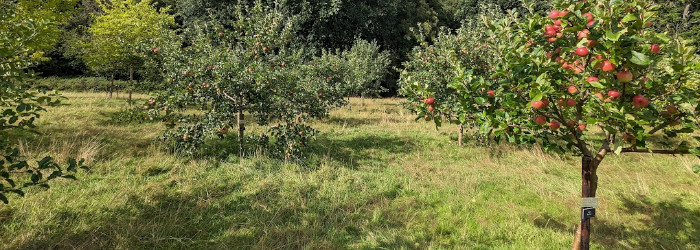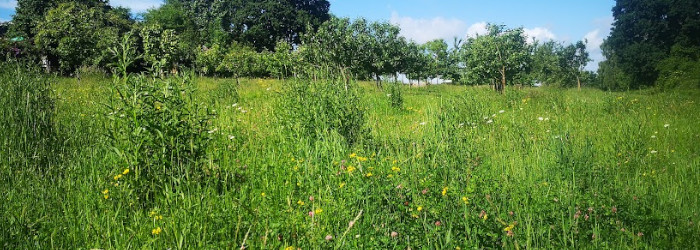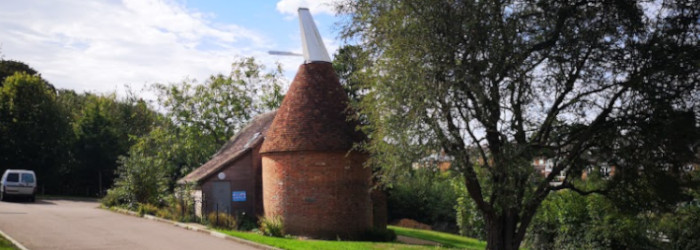
#8 The Community Orchard

This stage is not easily accessed by pushchairs and wheelchairs. An alternative entry point is along the path next to the skate park.
The Community Orchard

The Community Orchard and wildflower meadow was developed as part of the Heritage Lottery regeneration of the park. It began in December 2014 when the first trees were planted by contractors: 15 semi-mature trees in a central group around an open glade. The remaining 75 trees were planted by individuals, families or organisations linked to the park, who each sponsored a tree. You can read their dedications attached to the stakes next to the trees.
The trees were chosen with an emphasis on disease resistance, with a variety of different types of fruit trees. The various fruits ripen throughout summer and autumn, starting with cherries in late July, finishing with the last apples in early November. The varieties include apples (desert, cooking and cider), pears, cherries and plums, as well as quince, damsons, mulberries and crabapples.
As an organically managed orchard, is a valuable wildlife resource, with blossom for pollinators, a variety of fruit and the wildflower meadow.
Just For Kids

Can you find the bug hotel? What insects do you think my live here?
If you are following the 'brass-rubbing' trail you'll find a pear here.
Before The Orchard

Until the 1930s the site of the orchard was a hay meadow, part of a mixed farm known as Charity Farm. Then some 26 acres of the farm was purchased by Councillor Edward Strange and transferred to the borough council as an extension to the Grosvenor Recreation Ground. It was named Hilbert Recreation Ground in memory of his late mother Lydia.
The orchard site remained as a meadow area during the 1930s. Then during World War II the Dig for Victory campaign allowed councils to use private or public land to grow food for the nation. In 1941 and 1942 potatoes were grown on the field. Then the site became allotments during and after the war, until food rationing ended in 1954, and it once again became grassland.
The Wildflower Meadow

The wildflower meadow has a wide variety of perennial plants and grasses, which include birdsfoot trefoil, common knapweed, oxeye daisy, red and white clover, meadow vetching, meadow cranesbill, wild carrot and field scabious. These attract a variety of insects, including meadow butterflies such as common blue and small copper, honey, bumble and solitary bees, and also many species of fly, including hoverflies. Grasshoppers and crickets can be found among the grasses.
There is an ongoing long-term project to extend the wildflower meadow, started in September 2023 by KHWP volunteers. Initially, the dominant grasses in the area need to be weakened before wildflower seed can be sown. After the grass was cut short as possible (by strimming and repeated mowing), the area was scarified, then yellow rattle was sown. This is a semi-parasitic annual that feeds off the nutrients in the roots of grasses and in time will weaken them. Once the yellow rattle is well established, wildflower seeds will be sown.
What Next: The Oast House

Leave the orchard and follow the path past the skate park then turn left.